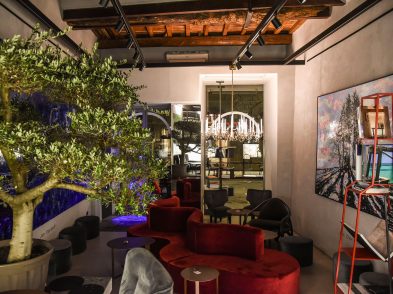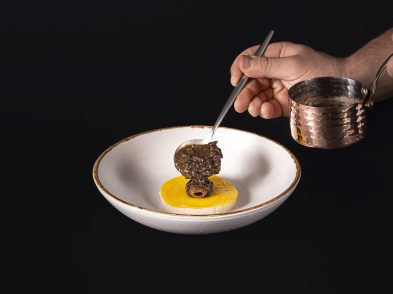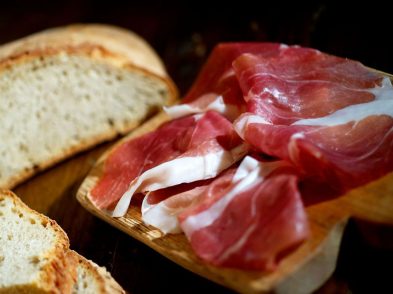You would never have believed anything so simple as having a coffee could possibly be so complicated; but once you really understand Italian coffee you too will appreciate and indeed hold in great esteem the greatest of all Italian rituals – prendere un caffè (having a coffee).
What?
Espresso: the short, hot blast of dense, dark coffee that is to be drunk straight away without letting it cool down.Unless you specify otherwise you will get the standard measure, however, the espresso can also come in two other versions; 1) basso, corto or ristretto (three ways of saying, even smaller), or 2) alto or lungo (slightly larger). Real connoisseurs sometimes claim that the only way to really taste the coffee is to drink it from a glass and not from a china cup ? hence on top of many espresso machines you will see four or five small shot glasses. Want to try it? – caff? nel vetro are the magic words.Many Italians do take their espresso with sugar, or artificial sweetener (dolcificante). One important note ? in Tuscany the words caff? and espresso are interchangeable; order a caff? and you will be served an espresso!
Espresso Macchiato: the same espresso, but with a dash of either hot (macchiato caldo) or cold (macchiato freddo) or frothy (macchiato con la schiuma) milk.This variety of coffee is generally taken without sugar.
Caff? Americano: this of course is absolutely nothing like an American coffee! It is an espresso, served in a large cup that has been topped up with a dash of hot water that will dilute the coffee just a little.
Caff? Corretto: literally a coffee that has been ?corrected? ? normally with a generous dash of spirits (rum, brandy, whisky).Adds an extra kick!
Espresso doppio: not for the faint-hearted. A double whack of caffeine in a double espresso! Don?t venture this one or you are liable to be up all night pacing the floor or bouncing off nearby ceilings.
Caff? freddo: a rather recent invention for the hot summer months ? an espresso coffee shaken up with ice and sugar, served in a glass. A good bar will make one for you there and then, although nowadays many bars do have pre-prepared bottles at the ready, and you can even find it in cans in the supermarket!
Cappuccino: an espresso served in a larger cup that is topped to the brim with hot frothy milk. You could ask for a cappuccino bollente (boiling hot) or tiepido (lukewarm). You could even ask for the addition of cacao in polvere (a dusting of bitter coco powder). One could even ask for a cappuccino senza schiuma (cappuccino without froth). Feel free to add sugar or not, as you prefer.
Caffe latte: now we start getting complicated! This is essentially the same as a cappuccino without froth, but may well be served in a tall glass rather than a cup. Generally there would be higher milk to coffee ratio than in a cappuccino.
Latte macchiato: once again, served in a high glass, this is basically a glass of hot milk, with a tiny dash of coffee (the reverse of the caff? latte!). The milk is poured in first, and the coffee is added afterwards.
And an important ingredient that you may wish to use in any of the above is caff? decaffeinato (decaffeinated coffee). Or perhaps you might try an Orzo, made from ground barley and thus is caffeine-free.
Bear in mind that this is just the abbreviated list ? any good Italian will be able to come up with another 20 versions that are not included here, but if you get to grips with this lot, then you are well on your way to knowing enough about coffee to avoid any major faux pas, AND ordering something you like too!
When?
Every coffee has a right and wrong time to be taken. Follow the Italian lead ? they have been doing it for an awfully long time after all!
Cappuccino, caff?-latte, latte macchiato: for breakfast, as a mid-morning ?snack?, and conceivably as a mid-afternoon ?snack? (Italians on the run might use it to replace a meal). A cappuccino and brioche or pastry is a great way to start the day and very often it leaves room to repeat the experience at mid-morning too, without killing your appetite for lunch!
BUT, NOT EVER AFTER A MEAL!
Of course, Italians eat very well, and quite rightly take great pride in their cuisine. Possibly one of the most offensive ways of ending a meal is by asking for a cappuccino. Here we have referred to it as a snack ? indeed it is a large cup of warm milk, and very filling. Ending your meal with a cappuccino (apart from constituting a violent assault on your digestive system!) implies that you have not eaten well or sufficiently. If you cannot manage an espresso then try learning this phrase: ?Un caff? americano con tantissima acqua calda, e un po? di latte freddo a parte.? (An espresso coffee with lots of hot water, and some cold milk on the side)!!! Any Italian waiter worth his salt will call this ?dishwater? once out of your hearing…or perhaps even well within your hearing! But you will get something approaching an Anglo-Saxon watery coffee that you can drink, and that doesn?t (drastically) upset the cook!







